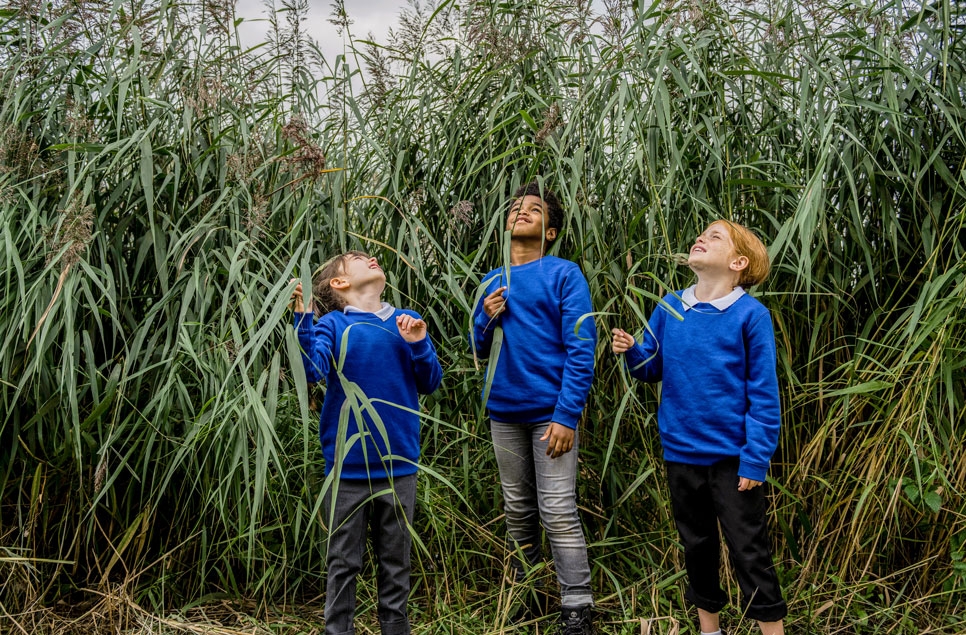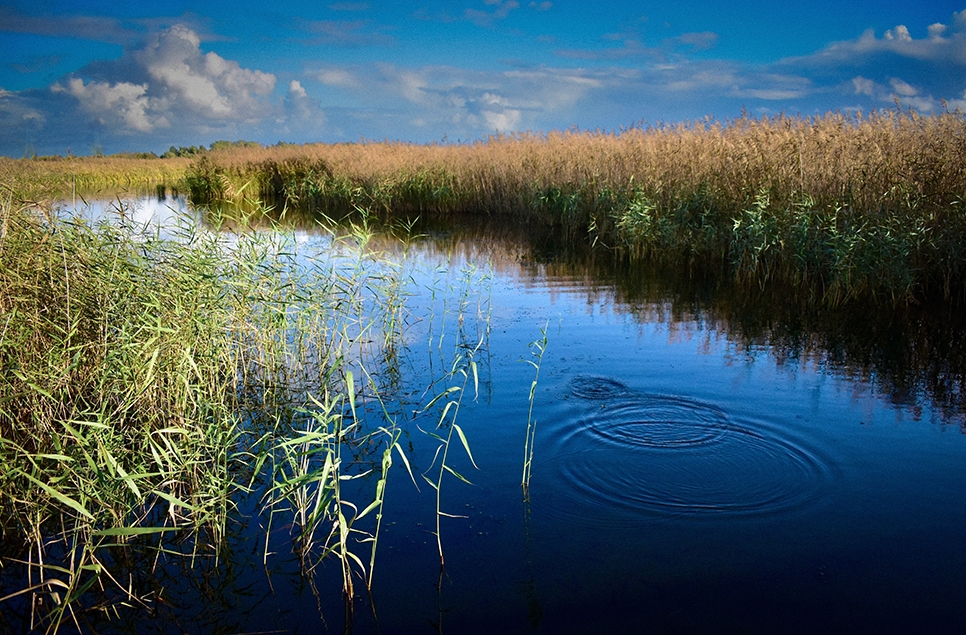11 top wetland bird plumages
Spring is with us, meaning it’s the best time to keep an eye out for the finest plumage wetland birds have to offer. They’ll be courting and breeding this season and that means showing off. So we thought we’d count down some of our ‘best in-show' and give you some pointers on what to look out for.
11. Goosander (Mergus merganser)
Early spring breeding-plumage male goosander kicks off our countdown with some serious stately subtlety. The body is long and streamlined with smooth lines and curves that wouldn’t look out of place on a sports car. A long, hooked bill runs into a black, glossed-green head. The back is pure black, starkly contrasting with the white body plumage. But is it pure white? On glassy, still lakes in the right light, these birds positively glow salmon-pink, giving them an ethereal, ghostly feel as they glide across the water and disappear under in search of their next meal.

10. Black tern (Chlidonias niger)
Bumping into a black tern in spring might well be the highlight of any birder’s year. Seen in the UK whilst on passage to their European breeding grounds, adults sport sleek grey wings, back and tail, contrasting sublimely with the head, chest and belly which are all-black. This makes them a phenomenal sight as they dip low in flight towards the water’s surface, or hawk agilely through the air to catch prey on the wing. The look is finished off with black legs and a black bill.

9. Black-throated diver (Gavia arctica)
It’s scarcely believable these birds exist at all, almost like an outlandish, AI-generated work of art. They breed on Scottish Lochs, where they use their dagger-shaped bill to catch fast fish underwater. Their head appears as a velvety light-grey with reddish eye, while the neck is purple-black. A pattern of white and black stripes is sported on the neck sides and chest, developing into distinct white blocks on the back.

8. Black-necked grebe (Podiceps nigricollis)
A scarce sight in summer plumage in the UK, with only small numbers spending the breeding season with us. If you manage to get a good look at them, you’ll quickly see why they’ve made it onto our list. The lower body is a rich buff, with a powder-puff rear. A jet-black back flows into chest, neck, face and bill of the same colour, with a small red eye insert. The look is topped off with a bright fan of yellow cheek feathers, seemingly emanating from behind the eye like the most vibrant of mascara.

7. Spoonbill (Platalea leucorodia)
This member of the heron family features here as on top of its peculiar morphology, they really stand out in breeding plumage. On a background of opal-white, their jet-black legs and bill juxtapose with yellow on the bill-tip, face and chest, as well as shaggy plumes appearing on the back of their head. Seriously funky birds.
Do just take a minute and repeat it to yourself: these birds, quite literally, have evolved a bill shaped like a spoon. And why have that spoon? For spooning stuff, of course. They feed by swishing the spoon sideways, back and forth through the water. Their bill is packed full of sensors and picks up scrummy yummies like small fish and insects.

6. Lapwing (Vanellus vanellus)
Some of us will have experienced large flocks of lapwing during the winter, their seemingly lazy flaps of black and white underwings in flocks of thousands strong, creating a mass-chequerboard effect.
But if you’re able to find one of these plovers in breeding plumage and can get close-up views, you’re in for the real treat. Pink legs give way to a white belly and face, with black neck, bill and forehead. Atop the forehead sits a long, thin, wispy crest, unlike any other UK wader. It’s their wing plumage though, that has the most potential to really catch you off-guard; waves of iridescent purples amongst the green and black.

5. Spotted redshank (Tringa erythropus)
This line-up features a few birds where black features heavily and the spotted redshank is top of this particular class. In breeding plumage, the head, neck and breast are solid black, whilst the wings, back and tail are intricately specked with white. Black legs and a black/red bill complete the look for the smartest wader you’ve ever seen.
Some winter in the UK, when their plumage reverts to grey and white. But you’ve a chance of finding them in their breeding-finery as they move to and from breeding grounds in northern Scandinavia and Russia. Look for them most likely in April and then June/July.

4. Red-necked phalarope (Phalaropus lobatus)
Unlike most birds, the sex roles are reversed in phalaropes. Females compete for the attention of the males, who then go on to incubate the eggs and care for the chicks. So it’s no surprise that it’s the females who are the most attractively plumaged. A bright flash of burnt orange swooshes around the sides of the neck whilst broad yellow stripes appear across their back. These bright colours fade to shades of grey elsewhere, creating highly contrasting plumage and a very smart bird indeed.
Winter birds take on a white and grey-striped outfit that is still extremely smart, but not quite on the level of their summer look.

Now for our top three...
3. Mallard (Anas platyrhynchos)
Although a common quacker, the mallard easily makes it into our top three. From feeding the ducks in the park, to viewing huge flocks on winter floods, you’ll certainly come across a few mallards. Many of us take them for granted, but, in good light, take a look at the colours on this bird. The obvious greens on the head take on a purplish-blue sheen. Adorned with a bright yellow bill, this is one of the smartest duck-heads in the world.
The vivid green stops abruptly with a smart white neck collar, giving way to purple-brown and pastel-grey body tones, tipped with black. Whilst preening or in flight, you might catch a glimpse of their ‘speculum’, a colourful inner-wing bar bordered with white that will appear blue, green or even purple in different lights. Overlook them at your peril.

2. Garganey (Anas querquedula)
If you’re out bird-watching in early spring then garganey are the prize to look out for. Often shy and elusive, hiding amongst wetland vegetation, sighting the white eye-crescent of the male can quickly get the heart racing.
Wintering in Africa and migrating to Europe for the breeding season, they’re one of the first true signs of spring. The bold white on the head stands out from the near-purple head and chest, contrasting with a pale grey flank. Above this sits a series of plumed wing feathers known as ‘scapulars’, black and white in colour and noticeably pointed, finishing off a demanding look.

1. Common kingfisher (Alcedo atthis)
Ask anyone who’s seen a kingfisher in the last year and they’ll likely be able to tell you where they were, when, and exactly what the bird was doing. They are a sight to behold. You might first notice them by their short, sharp, whistling call whilst a tiny blue bullet zips over the water. Your brain might just have processed what you are looking at as the bird flies away from you, its bright-blue back feathers drawing your eyes to seek out where it’s perched up.
If you’re lucky enough to spot where it is, you’ll find its greenish-blue wings and crown contrasting with the cyan-blue back and orangey-red underparts. Depending on the light, these colours can shift a surprising amount in tone, especially when sunlight is bouncing off the water to light the bird from below. White neck patches, red feet and a disproportionately large, black bill make up the look.
They are the most beautiful wetland bird. If you happen to live near a pond, lake or river where there might be small fish on offer, spend a bit of time there and you’re likely to see one this spring.

Disagree with our rundown? Join us on our social channels at the links below.
Or, if you’ve had enough of the above show-offs, head over to our ‘Guess the female duck’ quiz for some much-needed chill time and a chance to discover simple browns and greys.



